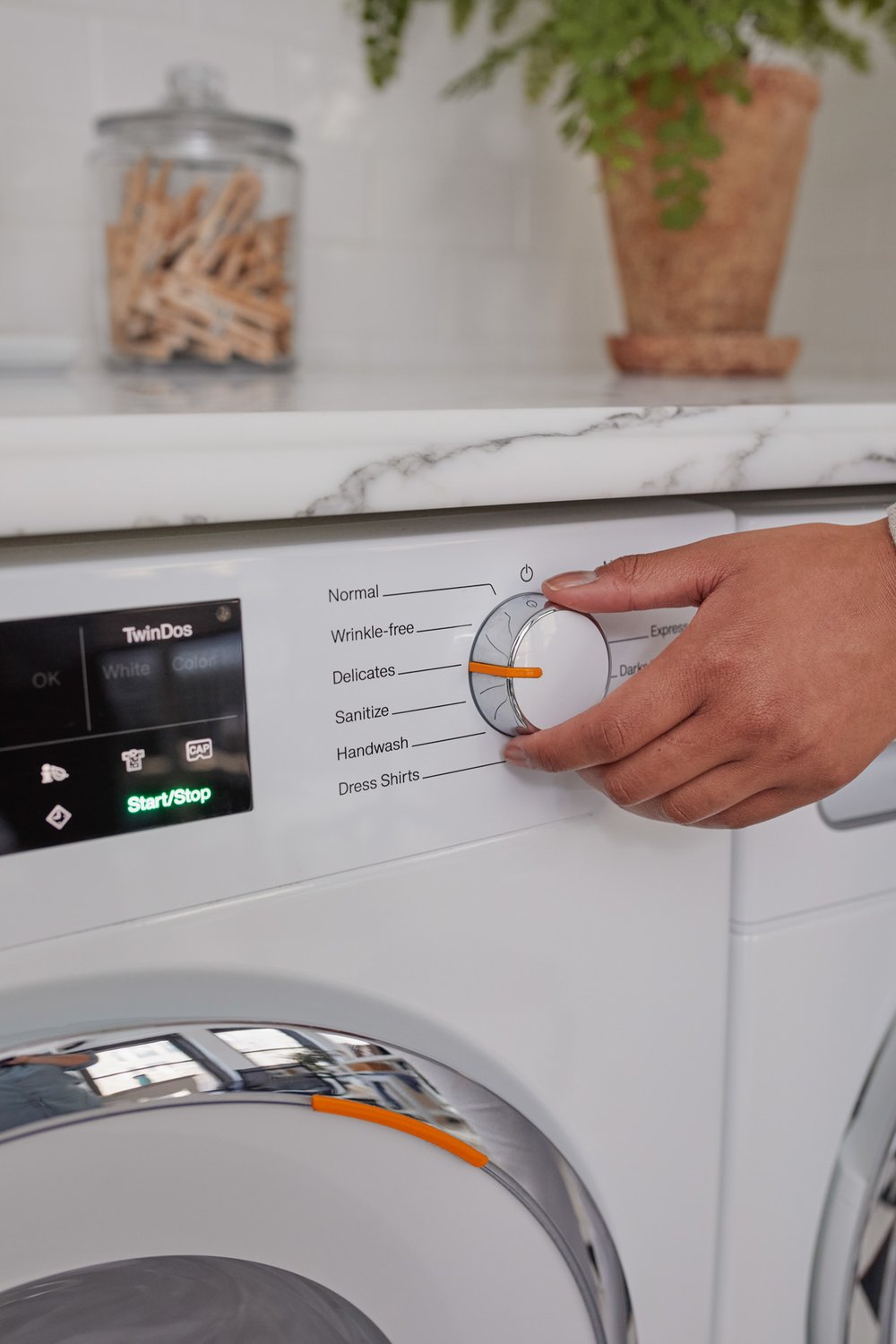
HOW TO
Understanding Washer and Dryer Cycles
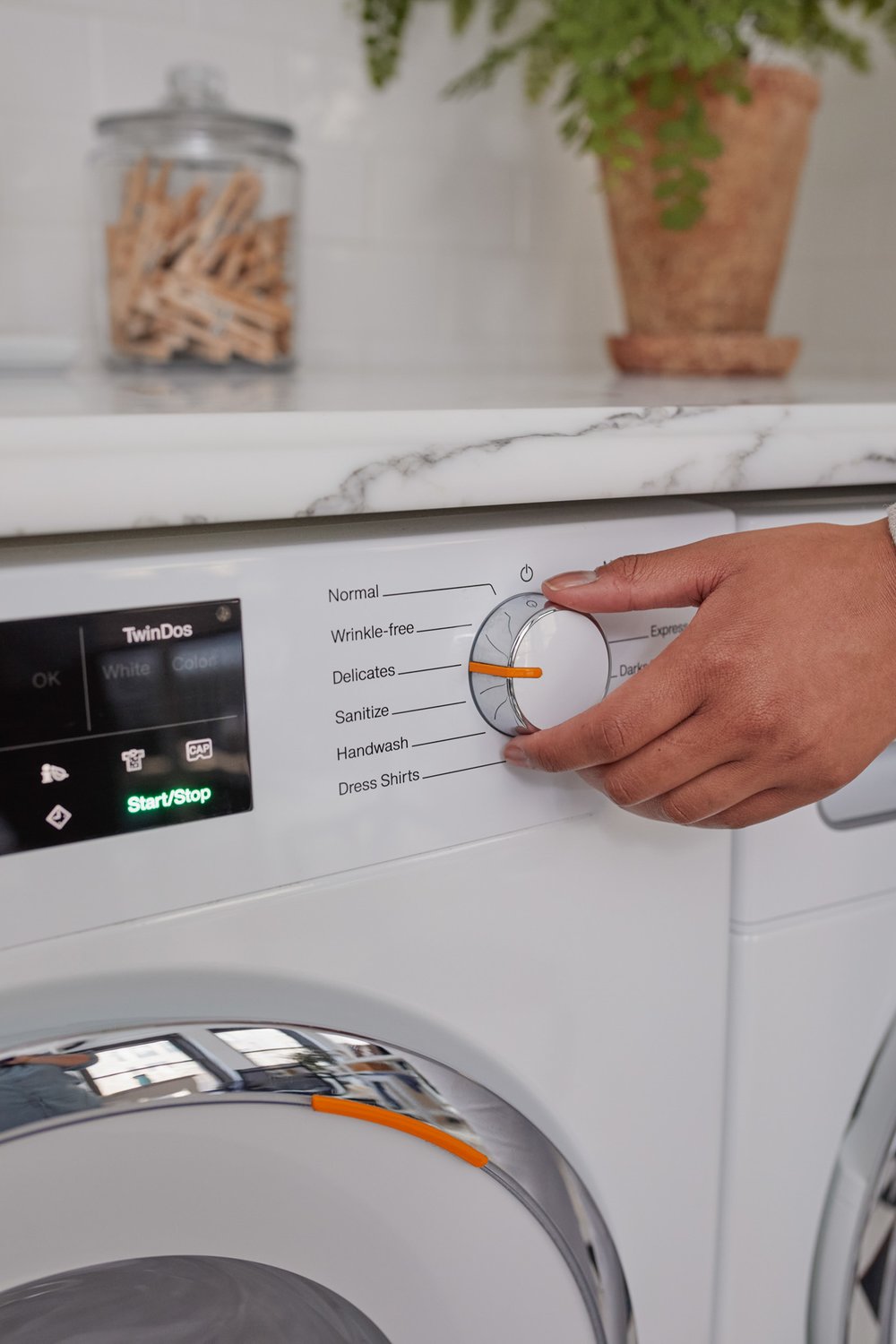
Understanding Washer and Dryer Cycles
Whipsawed by washing machine worries? Confused by cleaning cycles? We designed this guide to demystify washing machine cycles and help you understand which washer cycles are best for your laundry. Read on to have all washing machine cycles explained, and learn which to use for various types of laundry. Plus, learn about how to dose your brand-new Laundress detergent, below!
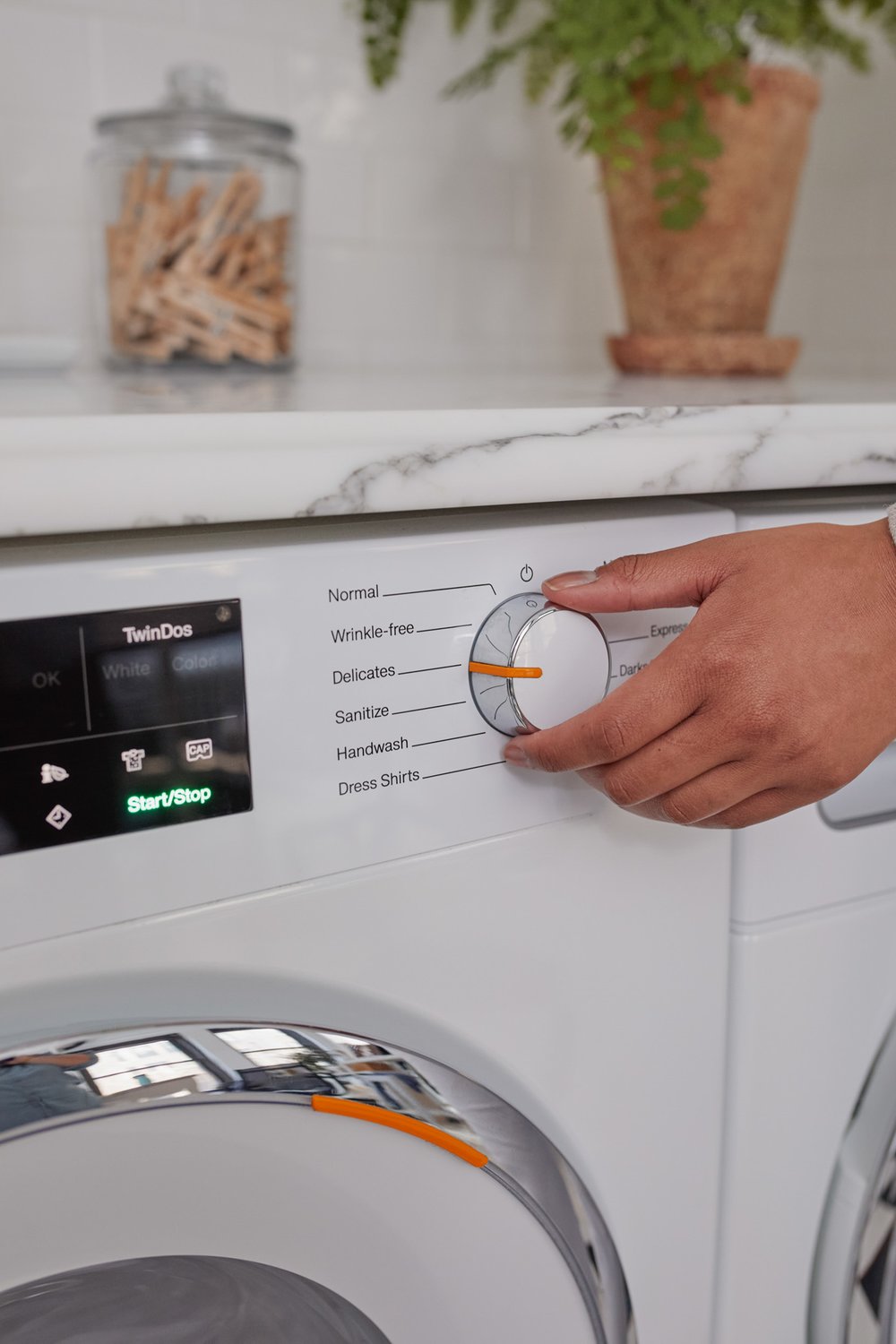
Dosing Your Laundress Detergent
Welcome to dosing 101: When selecting a wash cycle for your favorite garments, it's important to also measure your detergent correctly to ensure the best washing results. Learn how to dose properly with our handy chart.
Signature Detergent
| MEDIUM LOAD | 1 FL OZ / 30 mL |
| HEAVILY SOILED OR LARGE LOAD | 2 FL OZ / 60 mL |
Fabric Conditioner
| MEDIUM LOAD | 1 FL OZ / 30 mL |
| HEAVILY SOILED OR LARGE LOAD | 1.5 FL OZ / 45 mL |
Wool & Cashmere Shampoo
| HANDWASH | 0.25 FL OZ / 7.5 mL |
| MEDIUM LOAD | 0.5 FL OZ / 15 mL |
| HEAVILY SOILED OR LARGE LOAD | 1 FL OZ / 30 mL |
Delicate Wash
| HANDWASH | 0.25 FL OZ / 7.5 mL |
| MEDIUM LOAD | 0.5 FL OZ / 15 mL |
| HEAVILY SOILED OR LARGE LOAD | 1 FL OZ / 30 mL |
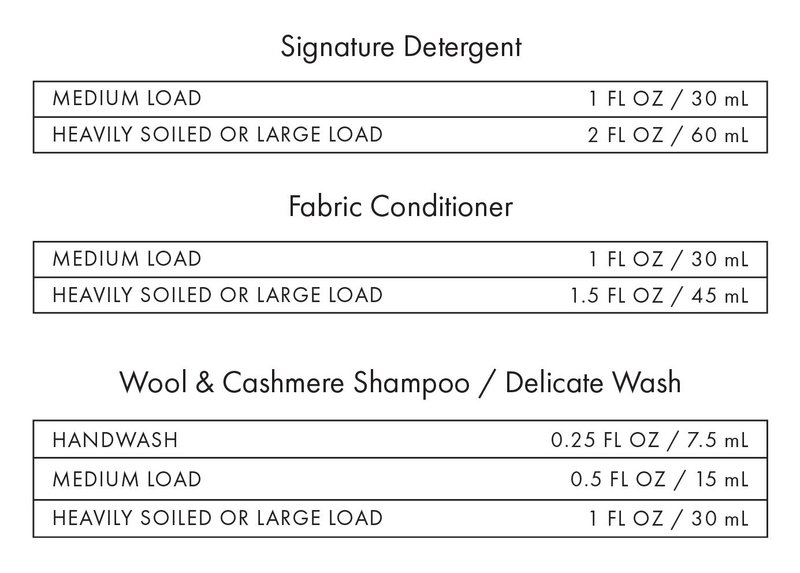
Washing Machine Cycles, Explained
Washing machine cycles are the various laundering settings your machine uses to clean your clothes. It's best to choose your wash cycle based on the construction, color, and types of fabrics you are washing - these will help determine you water temperature and spin speed. Understanding machine cycles is an important part of taking care of your clothing and linens - the more you know, the more you can get the most out of laundry day. Not all washing machines are created the same. Each has their own efficiency, capacity, and various features, so use this guide to determine which machine cycles are right for your laundry. Get deeper insights into when to use the delicate wash cycle, wool cycle, permanent press, or custom wash cycles, below. We'll explain the different cycle settings and how to choose the right intensity and temperature for your fabrics.
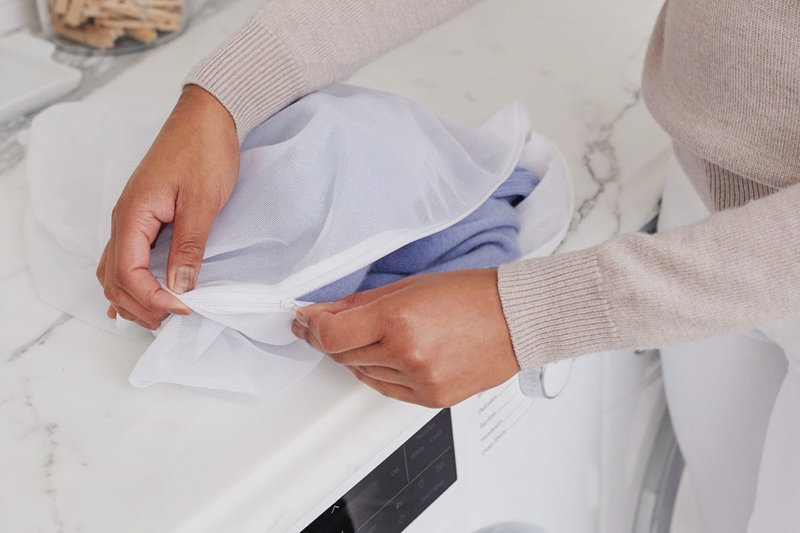
The Delicates Cycle
A delicate wash or “hand wash” cycle is the machine equivalent to handwashing! This cycle uses warm or cold water with low or no spin. It's typically the shortest and most gentle cleaning cycle, and the low or no-spin allows for minimal fabric agitation. If the machine defaults to warm water, we recommend you override this by selecting cold water. (That's what we do here at The Laundress headquarters with our front-loading machine.) Select the Delicate wash cycle when washing delicate items. Erring on the side of caution for items like lingerie, eveningwear, and hosiery, we always default to a delicates cycle and then scale up from a gentle cycle as necessary depending on the item. When washing something like a delicate blouse or vintage tee for the first time, opt for a delicate wash cycle with cool water and a low spin. This will help to prevent unwanted shrinkage! Wash With: Delicate Wash for delicate items or Wool & Cashmere Shampoo for wool, cashmere, merino, faux fur, and knits. Insert items into a Mesh Bag to add a layer of protection to knits and delicates while washing and help prevent snagging and tearing.
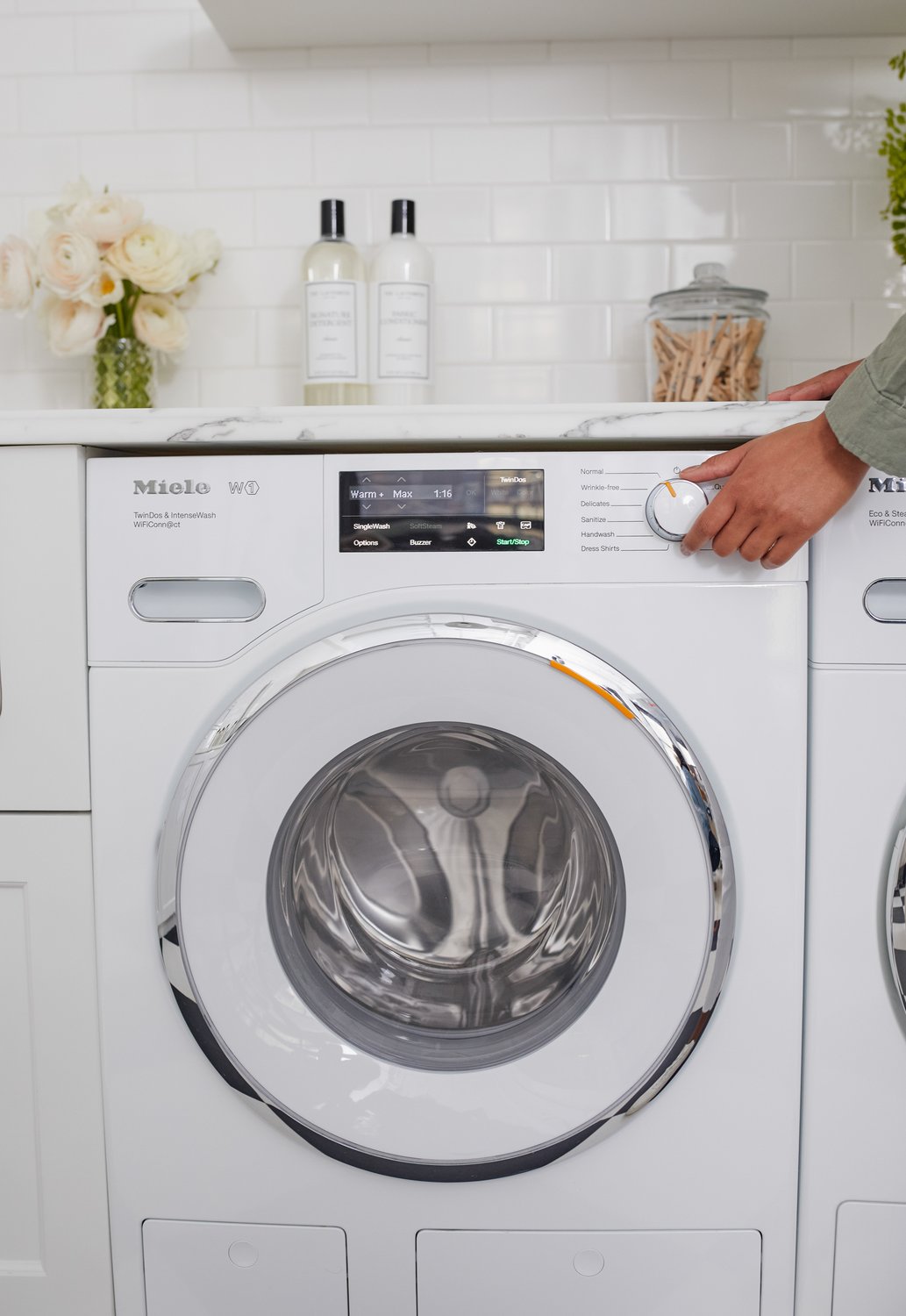
The Normal Cycle
With high agitation and a lengthy cycle, the Normal cycle is typically the most intense washing machine cycle. Select the Normal cycle for everyday laundry items made of cotton, linen, and durable synthetics, such as sheets, towels, T-shirts, socks, and (non-fancy) underwear. The normal cycle is the ideal casual wash cycle for your everyday, most-loved fabrics like cottons and polyester. Don’t forget to sort items by color before the wash to avoid dye transfer. Depending on your washing machine, this cycle may ask you which water temperature you'd like to use. Select the temperature based on the contents of the load: for whites, select hot water; for colors, select cool or warm. Keep in mind that cotton and synthetic towels of any color will get the cleanest when washed in warm to hot water. Wash With: Signature Detergent and Fabric Conditioner for everyday laundry made of cotton, linen, and durable synthetic fabrics.

The Permanent Press Cycle
The Permanent Press cycle was created around the midcentury in response to the advent of synthetics, wash and wear, and wrinkle-free clothing. Shorter than the Normal cycle, this cycle typically uses warm water (sometimes with a cool rinse) and a lower spin. This cycle is intended to keep wrinkles at a minimum, and can be used for many types of synthetic fabrics. Common synthetic garments and how to wash them:

Delicate Wash vs. Hand Wash Cycles
The Delicate and Hand Wash cycles are exactly as they sound — they are laundry cycles designed to wash delicate items like wool, lingerie and silk. Wondering whether to choose a Delicate cycle or Hand Wash cycle? For machines that have both cycles, the Hand Wash setting is typically designed for the most sensitive fabrics and will have the lowest spin (or no spin at all!). Always consult your machine's manual before proceeding for best results. Items tagged dry clean or hand wash can often be washed at home with the Hand Wash or Delicate wash cycle and the right fabric-specific detergent for delicates. These more gentle machine cycles use a low level of agitation/low spin speed, and cool to cold water to provide your fabrics with a similar level of care as hand washing in your tub or sink would. When selecting a detergent, opt for Delicate Wash for delicate items, and Wool & Cashmere Shampoo for knits, woolens and blends. Please note that extra-sensitive fabrics, such as suit blazers, special vintage pieces, and items with embellishment (like sequins or beading), should never be placed in the washing machine. Instead, hand wash or steam clean!


Other Cycles and Add-Ons
Some machines include additional cycle options such as Whitest Whites or Deep Clean. Selecting one of these settings in addition to the regular washing machine setting (Normal, Delicates, Permanent Press) generally intensifies whichever cycle you're using, sometimes adding more water or a longer rinse or presoak. You can opt for this type of deep cleaning setting on your washing machine settings when washing heavily soiled laundry, like smelly towels. The Pre-Soak and Extra Rinse settings can be used as add-ons to lengthen and deepen your cleaning cycle. We recommend using the Pre-Soak setting for stained fabrics (pre-treat first with Stain Solution!) to help loosen spots before washing. The Extra Rinse setting is a great option when laundering absorbent items like towels, as it can help to rinse away any excess detergent residue. Note: It's okay to hit the Pre-Soak or Extra Rinse cycle button in your machine washing process when washing most everyday fabrics. However, adding additional agitation or soaking is only recommended for cottons, linens, and durable synthetics. Excessive agitation and lengthy water exposure, even when using cold water, can cause shrinkage on delicate items like wool.
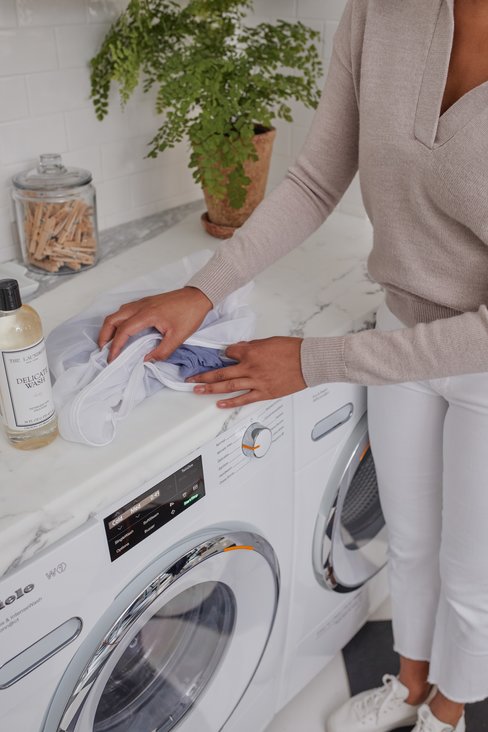
The Machine Dials
What do the temperatures on my washing machine dial refer to? The first temperature refers to the cleaning water. The second refers to the rinse water. Hot - Cold = Hot clean, Cold rinse Warm - Cold = Warm clean, Cold rinse Cold - Cold = Cold clean, Cold rinse To achieve a deep clean while helping prevent shrinkage and wrinkling for your everyday items, try opting for a hot-cold cycle!

Dryer Cycles 101
Published on



















